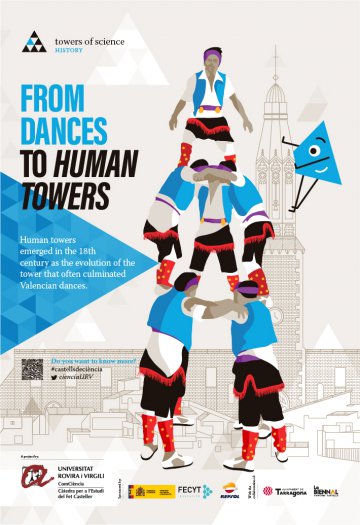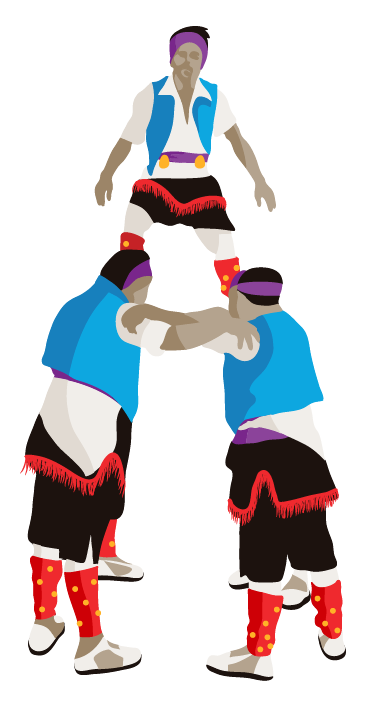
Eduard Jiménez Virgili
Eduard Jiménez Virgili, advisor to the URV's ISOCAC research group on castle and maritime studies. Nautical and underwater archaeologist, historian, high school teacher researcher.
 The forced standstill that we were brought to by the COVID-19 pandemic forces us to re-evaluate our reality, which is recent in terms of time but a long way off in terms of level: starting up again is by no means easy. Why don't we think back to the very beginning? What would it be like to build the human constructions we are familiar with but starting from scratch?
The forced standstill that we were brought to by the COVID-19 pandemic forces us to re-evaluate our reality, which is recent in terms of time but a long way off in terms of level: starting up again is by no means easy. Why don't we think back to the very beginning? What would it be like to build the human constructions we are familiar with but starting from scratch?
If we take a look back at the international scene, we realise that the practice of erecting structures of human beings is not such an anomaly as we might think at first. The reasons for doing so are quite different: in Venice human pyramids (Forze d'Ercole) were constructed between the 13th and 19th centuries to celebrate Carnival, while in the Indian region of Maharashtra, the govindas have been building towers since the 18th century for the annual Hindu festival of Janmaashtami. In both these cases, the origin is religious, but if we look at the performing arts, we find the Chinese acrobats, who were building human towers as far back as the 3rd century BC, and the North-African caravans in the Maghreb, which were popular from the Middle Ages onwards. Thus, climbing towards the heavens is not such an isolated practice; it is more global than it seems. But what is exceptional is the size and the complexity of the Catalan and Indian structures in the 20th and 21st centuries, which defy history and the laws of physics.
 Nowadays, the main theory on the origin of human towers is that they come from dances that were part of the Catalan festive model (archetypal celebrations that express their very essence, which have been traced back to the 14th century by the philologist and cultural manager Jordi Bertran). Briefly, there are three early precedents.
Nowadays, the main theory on the origin of human towers is that they come from dances that were part of the Catalan festive model (archetypal celebrations that express their very essence, which have been traced back to the 14th century by the philologist and cultural manager Jordi Bertran). Briefly, there are three early precedents.
The first is the muixeranga of Valencia, which erects a variety of constructions to celebrate festivals and rituals. These were exported to the Camp de Tarragona in the 17th-18th centuries, where they became popular and gave rise to the second precedent, the ball de Valencians (dance of the Valencians). It first emerged in Tarragona and is the most direct ancestor of the modern human tower. It was based on structures from the Valencian muixeranga, but was quite different from it in many aspects: the staging and costumes were distinctively local, the innovative construction was more acrobatic and spectacular and, above all, it was pre-eminently playful and festive (which led to the gradual loss of Catholic symbolism that was such a feature of the muixeranga). Finally, it is worth mentioning the religious moixiganga, which in Catalonia in the 18th and 19th centuries also included human towers in the performance. It portrays episodes from the Passion of Jesus by building structures to represent liturgical events, unlike the other two types of human tower, which represent other traditions (theatrical or burlesque parades).
 These cultural expressions (muixeranga, the dance of the Valencians and the religious moixiganga) existed side by side for decades, increased in importance and became firmly rooted in some parts of Catalonia. In the Camp de Tarragona in the 18th and 19th centuries, they became an accepted part of life and a common feature of the parades of common folk at festival times. Of all the places where these different expressions converged and were adapted, Valls was the testing ground for a new change: the local experiments on the original dances inspired new trends, which eventually led to the early stages of tower building as we know it today between the 1770s and 1810s. The desire for innovation led to different types of construction that were quite unlike the previous dances, and the focus was placed on aspects such as proportion, height, coordination and technique. This collective effort culminated in the formation of the first human tower teams, which then became associated with different ideologies and referred to as partits (parties). They are still in existence today in the form of the "colles vallenques" (the human tower teams from Valls).
These cultural expressions (muixeranga, the dance of the Valencians and the religious moixiganga) existed side by side for decades, increased in importance and became firmly rooted in some parts of Catalonia. In the Camp de Tarragona in the 18th and 19th centuries, they became an accepted part of life and a common feature of the parades of common folk at festival times. Of all the places where these different expressions converged and were adapted, Valls was the testing ground for a new change: the local experiments on the original dances inspired new trends, which eventually led to the early stages of tower building as we know it today between the 1770s and 1810s. The desire for innovation led to different types of construction that were quite unlike the previous dances, and the focus was placed on aspects such as proportion, height, coordination and technique. This collective effort culminated in the formation of the first human tower teams, which then became associated with different ideologies and referred to as partits (parties). They are still in existence today in the form of the "colles vallenques" (the human tower teams from Valls).
It is not even clear if human towers are the product of gradual change or of a sudden break with the dancing tradition in what the historian Joan Bofarull describes as "creationists against evolutionists". And even more questions arise when the theoretical focus is placed even further away from the spatiotemporal line of the tradition itself, which is what Pere Català i Roca referred to as "the remote origins of human towers."
